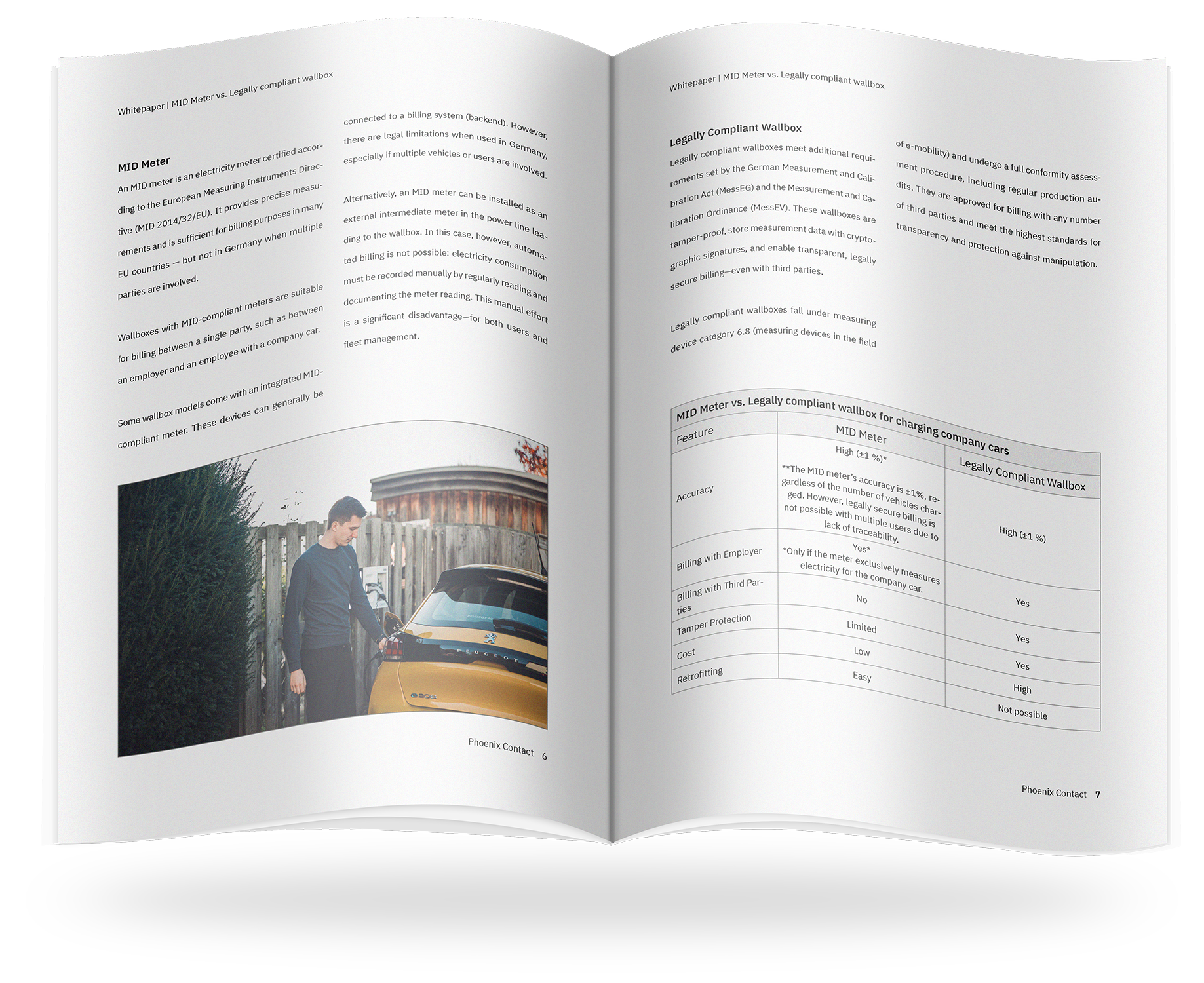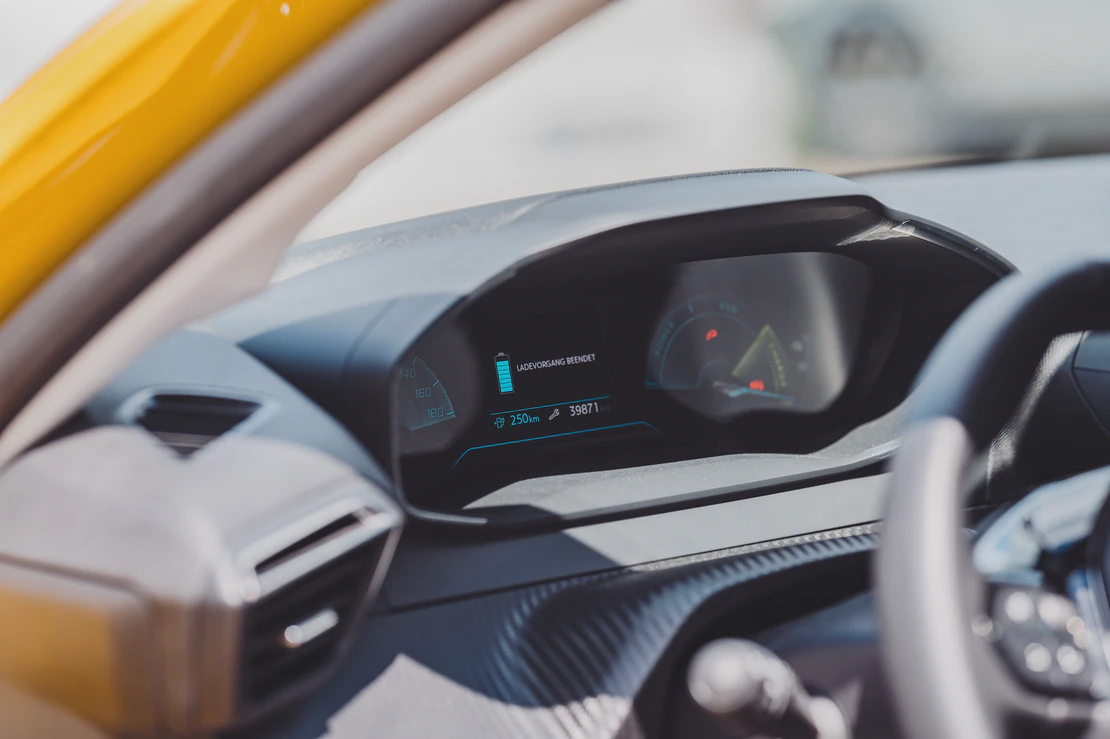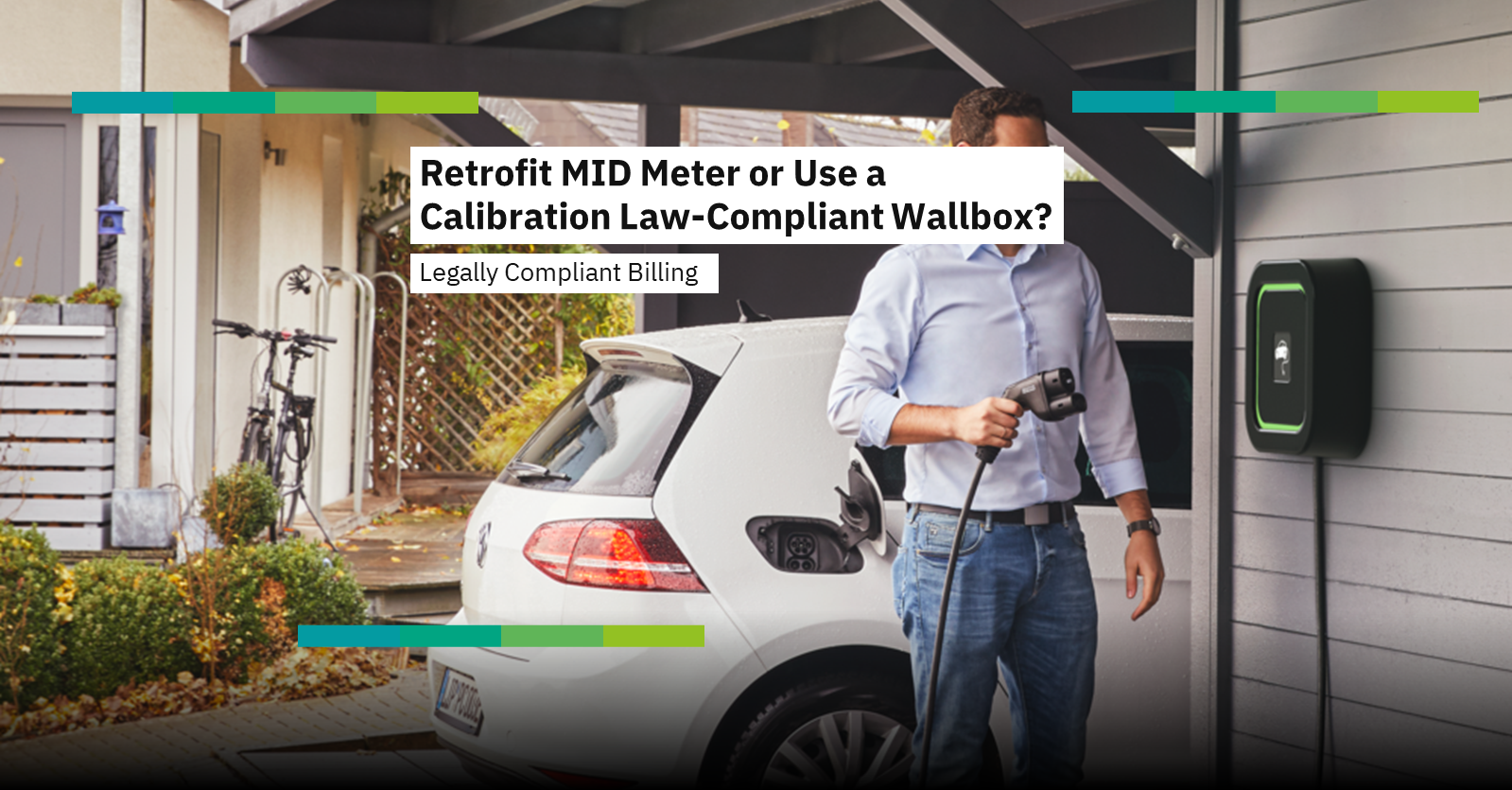There are many rumors about the necessity of calibration law-compliant wallboxes. While some billing solution providers believe that wallboxes with MID meters are sufficient for billing company cars, others consider a so-called calibration law-compliant wallbox indispensable. This often leads to confusion among customers. This blog post aims to shed some light on the matter.
Calibration Law-Compliant or MID Meter: Wallbox Comparison
The Measurement and Calibration Law (MessEG) in Germany sets requirements for measuring devices to ensure they meet the current state of technology and provide accurate measurements within a specified tolerance. Measuring devices can include scales, clocks, energy meters, or entire wallboxes. An important principle for measuring devices according to MessEG is that measurement values must be traceable and reproducible. Additionally, manipulations must be detectable if they cannot be prevented.
Retrofitting with MID Meter, Legally Compliant Wallbox, or Charge Repay Service?
Discover your options for legally compliant billing of company car charging at home: When is retrofitting with an MID meter sufficient, when is a legally compliant wallbox required—and how does the Charge Repay Service bridge the gap without needing to replace your wallbox?
REQUEST WHITEPAPER
REA-6 Document
For wallboxes in Germany, the REA-6 document is primarily relevant, an application guideline written by the 16 state calibration offices. The REA-6 document, officially known as “Rules and Findings of the Rule Determination Committee according to § 46 of the Measurement and Calibration Law for Measuring Devices and Additional Equipment in the Field of E-Mobility,” sets the requirements and guidelines for measuring devices and additional equipment in the field of electromobility.
Calibration Law-Compliant vs. MID Meter
The term “calibration law-compliant ” is not protected. In most cases, it refers to wallboxes classified as measuring devices of category 6.8 (measuring devices in the field of e-mobility) that have undergone a conformity assessment procedure. These measuring devices are suitable for billing charging processes to any number of third parties.
There are wallboxes with an MID-compliant meter. The Measurement Instruments Directive (MID) is an EU directive that regulates the accuracy and design of measuring devices. An MID-compliant energy meter guarantees the accuracy of the measurement of the energy that has flowed through a wallbox into an e-company car. However, wallboxes with an MID-compliant meter may only be used for billing to a single party. This exception rule has been established by the 16 state calibration offices; more information can be found in this document (Only in German) from the Working Group on Measurement and Calibration (AGME). This means that a wallbox with a MID meter, which is used for billing an electric company car, may not be used for private charging for legal reasons.

Calibration Law-Compliant Wallboxes
Measuring devices of category 6.8 (measuring devices in the field of e-mobility)
Undergo a conformity assessment procedure including regular production audits
Suitable for billing charging processes to any number of third parties
Wallboxes with MID-Compliant Meter
Measurement Instruments Directive (MID) is an EU directive
Regulates the accuracy and design of measuring devices
Suitable for billing to a single party
Exception rule by the 16 state calibration offices for company car billing
Special Features of Energy Measurement in Electromobility
The measurement of the charged energy cannot be repeated, so it is important that it is transparently traceable that the data is correct and has not been manipulated.
The Challenge of Determining Meter Readings with MID Meter
With an MID meter used for billing to a company, the meter reading is always readable on the meter’s display. It is important that only the e-company car is charged and no additional car. A single charge of another vehicle invalidates the entire billing period. In practice, this is not really feasible, as it can happen that friends or relatives visit and want to use the wallbox.
Guide to choosing a Wallbox: Your comprehensive Guide!
Our guide provides you with important insights into the details you should consider before purchasing a wallbox. Learn about the key criteria to make the right choice for your home and company car.
REQUEST GUIDE
Functions of a Calibration Law-Compliant Wallbox
A calibration law-compliant wallbox has various functions to ensure legally compliant measurement despite multiple users. With a calibration law-compliant wallbox, meter readings can be temporally separated per charging process. When multiple users charge at a single charging point, reading the meter display (as described above for the MID meter) is no longer sufficient to accurately determine the energy of a single charging process.
Therefore, the meter reading at the beginning and end of the charging process is enriched with additional data, such as the time, and stored cryptographically signed. When this information is transmitted to a billing system, it can be viewed by anyone, but any change in the data would be noticeable due to the signing. Users can check the data sets for integrity at any time with a so-called transparency software from the manufacturer.
Temporal separation of meter readings: The meter reading at the beginning and end of the charging process is enriched with additional data, such as the time, and stored cryptographically signed.
Transparency software: Users can check the data sets at any time to detect manipulations.
However, it does not always have to be a “calibration law-compliant” wallbox when multiple parties charge at a wallbox. The Charge Repay Service uses a patented system that allows any wallbox (with a charging point) to be legally authorized for billing, including the separation of additional private charging processes at the same wallbox.

Myths
A calibration law-compliant wallbox measures more accurately than one with an MID meter: Calibration law-compliant wallboxes usually use the same measurement systems as MID meters. The requirements for the measurement itself are not stricter. However, the recording, storage, and transmission of measurement data differ.
Any wallbox with an MID can be used for billing: MID meters are legally compliant for billing, as the user can always verify the correctness of the measurement by looking at the display. However, in some wallboxes, the meter is installed in such a way that the meter reading cannot be read, making them usually unsuitable despite correct measurements. The conformity assessment of the meter determines whether the display must be visible for proper use or not.
Conclusion: The Right Wallbox for Your Needs
The choice between a wallbox with an MID meter and a calibration law-compliant wallbox depends heavily on individual requirements and usage scenarios. While MID meters offer a cost-effective and simple solution for billing to a single party, calibration law-compliant wallboxes ensure higher security and transparency when billing to multiple parties.
In a world increasingly relying on electromobility, it is crucial that billing systems are not only accurate but also tamper-proof and traceable. Therefore, the decision for the right wallbox should be well-considered and based on specific needs. Our recommendation is to install a calibration law-compliant wallbox or retrofit your existing wallbox with the Charge Repay Service to ensure continuous legal compliance.




